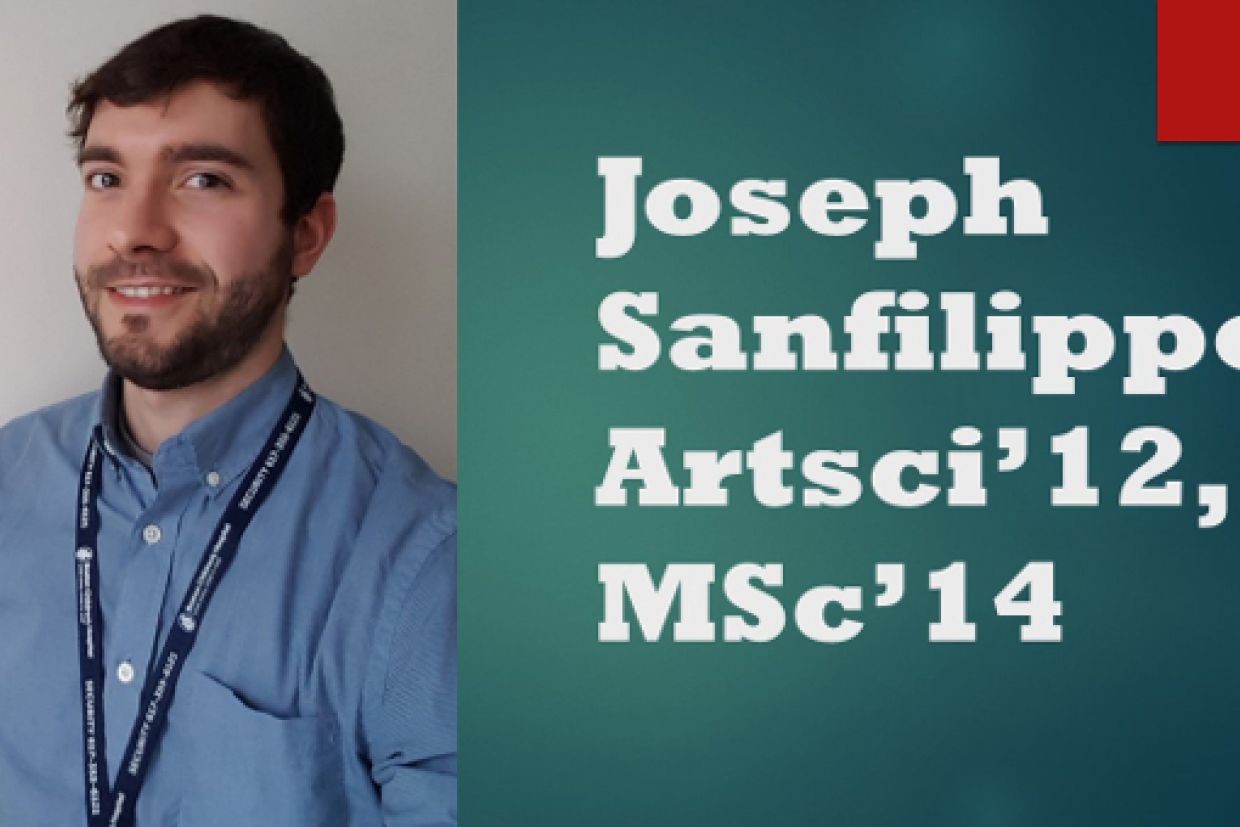Joseph Sanfilippo, Artsci’12, MSc’14, feels the skills he learned while taking the Queen’s Master of Science Program in Anatomical Sciences have helped him immensely in the subsequent steps of his career. After leaving Queen’s, Mr. Sanfilippo worked for a short time as a research assistant at the Hospital for Sick Children in Toronto, before starting a Master of Education degree at Harvard University. Today he is a clinical research coordinator at Laboratories of Cognitive Neuroscience at Boston Children’s Hospital.
Mr. Sanfilippo took time out to talk about the Queen’s Anatomical Sciences program and how it helped prepare him for his future.
Question: Tell us about your career/academic journey. Have you always wanted to do scientific research?
Answer: I love learning for its own sake and I’ve always found it rather difficult to constrain myself to one field of study. I haven’t always known that I’d enjoy working in science research, but my parallel interests in medicine, neuroscience, and education theory and practice have led me naturally to the work I’m doing now. I studied biology and English during my undergraduate degree at Queen’s, and after taking Ron Easteal’s excellent anatomy courses, I decided I wanted to pursue the discipline further. I enrolled in the Anatomical Sciences M.Sc. program and had an outstanding mentor, Stephen Pang, who inspired me to dream big and to pursue my academic penchants throughout and following the program. Shortly after the Anatomical Sciences program, I relocated to Boston to take up a part-time research internship at Boston Children’s Hospital while completing a Master of Education at Harvard. After finishing my degree at Harvard last year, I began working full-time in the Labs of Cognitive Neuroscience at Boston Children’s Hospital. This department is wonderfully interdisciplinary in its scope, and conducts research led by academics cross-appointed to the Harvard Medical School and the Harvard Graduate School of Education. I was able to find a position that allows me to delve into aspects of clinical medical science while applying my research to questions of educational practice. It’s been a dream, really.
Question: Why did you enroll in the Queen’s Master of Anatomical Sciences Program?
Answer: I enrolled in the Anatomical Sciences program because it is uniquely dynamic and interdisciplinary in its own right, and provides many varied opportunities for academic and professional development that you’d be hard-pressed to find elsewhere. Coursework in the anatomical sciences and educational philosophy, full human dissections, an extensive lecturing practicum, a thesis project for which you’re given full creative license – where else can you do all of that? In my last semester I was even given the opportunity to design and co-teach a small graduate-level course. The amount of responsibility that the faculty entrust into Anatomical Sciences students makes for a challenging, but incredibly enriching experience. I knew that I would come out of the program with a very singular skillset. I also feel like I should add that I found the program to be exceptionally fun.
Question: Do you feel the Anatomical Sciences Program helped prepare you for your job as clinical research coordinator?
Answer: Absolutely. The three pillars of the Anatomical Sciences program are content, inquiry, and pedagogy. The skills that I acquired from these pillars – knowledge of medical sciences, research skills, and skills in teaching/instructional design, respectively – have each assisted me immensely in the subsequent steps of my career. In my Anatomical Sciences thesis project I worked with archived MR images at Kingston General Hospital, and in my work now I conduct MRI scans with kids at Boston Children’s. Much of my ability to train and teach junior researchers in my lab in Boston is derived from the teaching skills I developed in the Anatomical Sciences program, and much of my ability to analyze the brain scans that I acquire in my job stems from the knowledge of neuroanatomy that I gained in the Anatomical Sciences program.
Question: Any advice for anyone entering the Master of Anatomical Sciences program at Queen’s?
Answer: Stay curious, keep an open mind, and dream big! It’s certainly important to go into the program with an idea of your long-term goals, but expect the program to introduce you to new intellectual and professional avenues that you hadn’t considered before. Be open to the possibility that your experiences will guide you in new directions and don’t be afraid to walk a path that hasn’t been walked before. The beauty of this program is that it sets students up for so many different and novel career paths within – and intersecting – the scientific, medical, and educational spheres.


